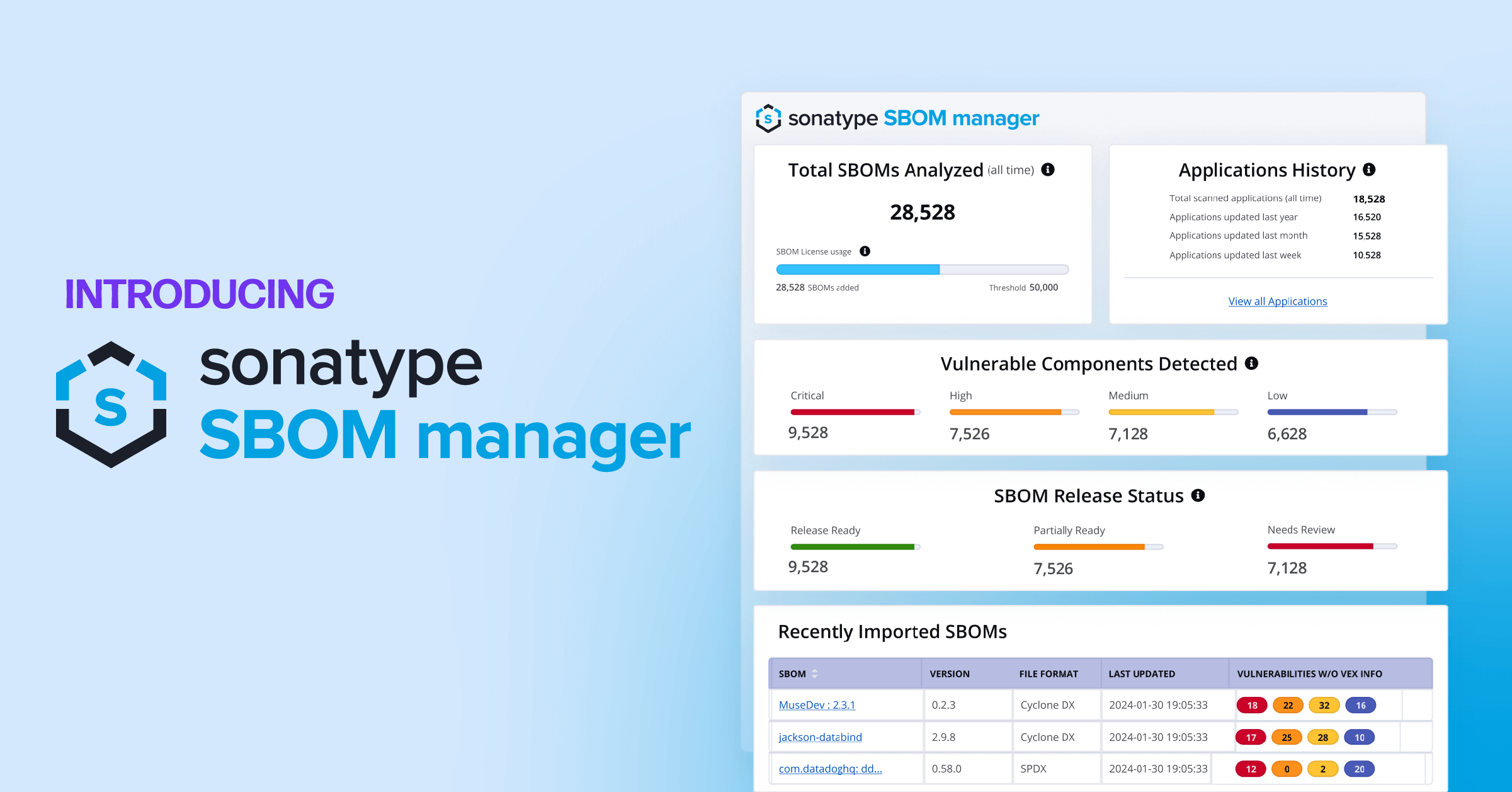In today's fast-paced software development landscape, organizations face rising challenges to ensure the security, quality, and reliability of the software they deliver. Your software supply chain plays a pivotal role in meeting these challenges head-on.
The increasing reliance on open source components to boost development velocity consistently introduces risk into your software supply chain. To manage and improve your software supply chain with a structured approach, you can leverage a software security framework, which we covered in a recent post on this blog.
Before you do that, you should measure the maturity of your organization’s approach to software supply chain management, so you can decide which software security framework works best for you. Although practices, policies, and vulnerabilities vary across the software supply chain ecosystem, you can take a temperature check of these variables and establish an objective level of maturity for your organization’s current state.
If you want to get a jump start, fill out Sonatype’s Software Supply Chain Maturity Framework survey which will provide a customized assessment of your current approach to the software supply chain, including how you measure up against peers in your industry. To learn more about the maturity framework itself, keep reading as we cover how to start your journey to a more resilient software supply chain.
Understanding software supply chain maturity
A software supply chain encompasses every step involved in the creation, assembly, and delivery of software products or services.
The maturity of a given software supply chain refers to the level of sophistication and effectiveness with which an organization manages and secures the components and dependencies in its software development processes. Maturity rankings range from ad-hoc and chaotic practices to optimized and proactive approaches that prioritize security, quality, and compliance. Most importantly, recent data and research revealed a clear disconnect between perception versus reality of an organization's software supply chain maturity.
A maturity framework demonstrates a progression of typical practices across stages over a period of time. This type of framework allows organizations to benchmark their current state against industry standards and identify areas of strength and areas that require improvement.
This differs from a software security framework, which we explored in our recent post. With a software security framework, you implement practices to create more secure software development processes. With a maturity framework, you measure existing states to determine where to start improving.
What is Sonatype’s Software Supply Chain Maturity Framework?
Sonatype’s Software Supply Chain Maturity Framework offers organizations a systematic way to evaluate their software supply chain practices.
Developed by industry leaders and security experts, the framework defines a set of maturity levels through which organizations can advance as they assess their software supply chain processes. These levels represent a roadmap for achieving higher levels of maturity, ultimately leading to a more robust and secure software delivery pipeline.
If you want to rev up your software supply chain management and drive towards maturity, a software supply chain maturity framework gives you momentum to start that journey. Sonatype’s Software Supply Chain Maturity Framework presents valuable insights into your current state of supply chain practices, highlighting eight key themes.
What are the themes of Sonatype’s Software Supply Chain Maturity Framework?
Below we explore the eight themes of Sonatype’s Software Supply Chain Maturity Framework and their significance in advancing software supply chain maturity.
Inventory
Efficiency in application inventory involves cataloging and tracking open source components used in software development. Organizations should move toward robust processes for component identification, version control, and vulnerability monitoring to maintain a comprehensive and up-to-date inventory.
Additionally, the evolving nature of federal government software bill of materials (SBOM) guidelines underscores the importance of establishing an accurate inventory to mitigate security risks and ensure compliance with licensing requirements.
Suppliers
Supplier hygiene focuses on evaluating and selecting reliable suppliers of software components. Establishing criteria for supplier assessment, including security practices, quality standards, and adherence to open source licensing requirements, serves as a point of significance in managing your open source components.
Effective supplier management ensures you source components from trustworthy providers, minimizing the risk of incorporating vulnerable or malicious code into your software supply chain.
Risk management
Effective risk management is crucial for software supply chain maturity. Organizations must identify and mitigate potential risks within their supply chain to ensure the delivery of secure and resilient software products. This involves adopting proactive measures such as vulnerability scanning, threat intelligence monitoring, and security assessments.
By establishing robust risk management policies and obtaining buy-in from key stakeholders in security, legal, and architecture, organizations prioritize vulnerability identification and remediation. Actively engaging stakeholders to gauge risk tolerances and aligning them with policy controls demonstrates a strong commitment to security, fostering a reliable and trusted software supply chain. This collaborative effort enhances vulnerability management and cultivates a culture of security and resilience throughout the software development and delivery processes.
Consumption
Establishing consumption policies involves defining standards and guidelines for using open source components within an organization. Governance of how you select components ties in with how you ensure compliance with licensing obligations and minimizing the use of components with known vulnerabilities.
You should create clear consumption policies that outline approved component sources, version requirements, and vulnerability management practices to foster a secure and compliant software supply chain.
Build and release
Robust build and release processes form the groundwork to maintain a stable and reliable software supply chain. Research uncovered for our 2022 State of the Software Supply Chain report emphasized the need for organizations to prioritize automation, reproducibility, and consistency in build and release practices.
Implementing continuous integration continuous delivery (CI/CD) pipelines and release management techniques ensures software artifacts are built, tested, and deployed efficiently, reducing the likelihood of errors or vulnerabilities.
Remediation
Effective remediation processes play a critical role in addressing vulnerabilities, defects, and non-compliant components within the software supply chain, contributing to organizational maturity. Timely and efficient remediation practices, such as patch management, vulnerability remediation, and license compliance measures, are key elements highlighted by industry experts.
Organizations that prioritize resolution of identified issues demonstrate their commitment to maintaining a secure and compliant software supply chain. By promptly remediating vulnerabilities, organizations can minimize risks, improve overall security posture, and enhance their maturity in managing software supply chain challenges.
Execution plan
An execution plan helps institutionalize new or improved processes and tooling for a more secure and resilient software supply chain. With a convergence of people, processes, and technology, an execution plan represents an intricate intersection. The complexity lies in harmonizing different practices and tools across departments, such as AppSec, Development, and Legal, and gaining buy-in and adoption from all stakeholders.
Measuring software supply chain maturity is a journey rather than an end-state. It entails strategically planning to address specific needs, enhance processes, and continuously progress towards a mature and efficient software supply chain. By embracing this approach and aligning it with the implementation of a software security framework, organizations can foster continuous growth and maturity in their software supply chain practices.
Contribution
Active involvement in the open source community demonstrates a willingness to collaborate, share ideas, and contribute to the improvement of software development practices. By actively engaging with the open source community, you can foster an environment of innovation, leveraging collective knowledge and expertise.
This collaboration leads to the development of high-quality software and the ability to incorporate early access to updates and fixes. These contributions enhance the resilience and robustness of the software supply chain, showcasing an organization's maturity in effectively leveraging the power of open source collaboration.
How to finally get started
Getting started on improving your software supply chain is essential for your company's success in today's technology landscape. You can take the first step towards your improvement journey if you complete our Software Supply Chain Maturity Framework survey. Although full completion of the survey requires a bit of a time commitment, the results provide valuable insights and personalized recommendations to guide your software supply chain practices.
By taking the survey, you gain a detailed assessment of your software supply chain maturity, identifying areas of strength and areas that require attention. The output of this survey is the Software Supply Chain Maturity Framework, which serves as a detailed roadmap tailored to your organization's unique needs.
Leveraging the Software Supply Chain Maturity Framework helps you measure your progress, prioritize improvements, and enhance the security and reliability of your software supply chain. With this foundation, you've taken an enormous step to proactively address challenges and strengthen your software supply chain, driving long-term success in your organization. By aligning the Software Supply Chain Maturity Framework with your software security framework of choice and other similar tools, you can unlock a roadmap to improve your organization's security and reliability.





